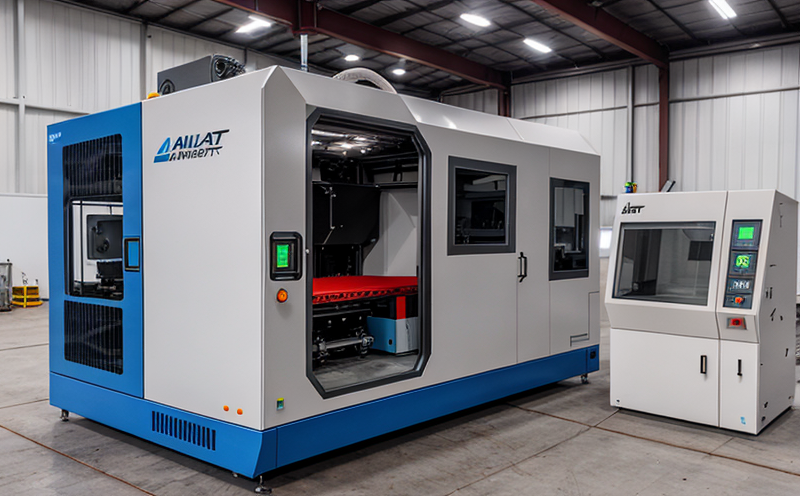ISO 17296 General Principles Testing for Additive Manufacturing
The development and implementation of additive manufacturing (AM) processes have significantly transformed industrial manufacturing by enabling the production of complex geometries with high precision. However, ensuring process consistency and quality is paramount to maintain product reliability and performance. ISO 17296-1:2018 establishes general principles for testing AM processes to achieve this goal.
The standard provides a framework that helps manufacturers and researchers assess the suitability of various AM technologies, materials, and parameters in terms of their mechanical properties, dimensional accuracy, surface finish, and repeatability. This comprehensive approach ensures that the products produced through additive manufacturing meet stringent quality standards and are fit for purpose across diverse industrial sectors.
ISO 17296-1:2018 is applicable to a wide range of AM processes, including but not limited to laser powder bed fusion (LPBF), electron beam melting (EBM), direct metal laser sintering (DMLS), and fused deposition modeling (FDM). It offers guidance on the selection of appropriate test specimens, testing methods, and evaluation criteria for each process. By adhering to these principles, organizations can enhance their AM processes' reliability and ensure compliance with international standards.
The standard's broad applicability makes it an essential tool for quality managers, R&D engineers, and compliance officers involved in the development, production, and certification of additive manufactured parts. It provides a robust foundation upon which more specific testing standards (such as those detailed under ISO 17296-2 through -5) can be implemented.
Implementing ISO 17296 ensures that manufacturers are not only meeting regulatory requirements but also setting higher internal quality benchmarks, thereby improving overall product performance and customer satisfaction. This standard is a cornerstone in the continuous improvement of additive manufacturing processes, supporting innovation while ensuring reliability across various industries.
Why It Matters
The implementation of ISO 17296-1:2018 is crucial for several reasons:
Enhanced Reliability and Consistency: By establishing a standardized approach to testing AM processes, the standard ensures that all tests are conducted consistently across different facilities. This uniformity in testing helps maintain product reliability and consistency, which is critical in industries where precision and performance are paramount.
Compliance with International Standards: Adhering to ISO 17296 demonstrates a commitment to quality and compliance with international standards. This can enhance an organization's reputation and open new markets by meeting the expectations of regulatory bodies and customers globally.
Innovation Support: The standard provides a robust framework for researchers and engineers to innovate within structured guidelines. This support fosters continuous improvement in additive manufacturing technologies, leading to more efficient processes and better-quality products.
Customer Satisfaction: By ensuring that AM parts meet the highest quality standards, ISO 17296 helps manufacturers provide products that are reliable and perform as expected. This, in turn, leads to higher customer satisfaction and trust in the manufacturing process.
Applied Standards
The application of ISO 17296-1:2018 is extensive across various industries, including aerospace, automotive, medical devices, and defense. These sectors rely on additive manufacturing for its ability to produce lightweight, complex components with high precision.
Aerospace manufacturers use AM technologies to create intricate parts that can withstand the rigors of space travel without compromising safety or performance. In the automotive industry, AM allows for the production of highly specialized parts that optimize fuel efficiency and reduce weight. The medical device sector benefits from AM's ability to produce customized implants and prosthetics with precision unmatched by traditional manufacturing methods.
The defense industry leverages AM to produce critical components for military applications where lightweight, durable materials are essential. By ensuring that these components meet the stringent requirements set forth in ISO 17296-1:2018, manufacturers can enhance product reliability and performance across all sectors.
Scope and Methodology
| Aspect | Description |
|---|---|
| Test Specimens | The standard recommends the use of test specimens that represent real-world components. These can include simple geometric shapes, complex assemblies, or even functional parts with embedded features. |
| Testing Methods | A variety of testing methods are covered, including mechanical tests (e.g., tensile strength, impact resistance), dimensional measurements, and surface finish assessments. Each method is tailored to the specific AM process being evaluated. |
| Evaluation Criteria | The standard provides clear criteria for evaluating test results, ensuring that all parties involved in the testing process have a consistent basis for making decisions about process suitability. |
| Repeatability and Reproducibility | The standard emphasizes the importance of repeatability and reproducibility in AM processes. This ensures that the same results can be obtained under different conditions, enhancing confidence in the testing process. |
The scope and methodology outlined in ISO 17296-1:2018 provide a comprehensive framework for evaluating additive manufacturing processes. By following these guidelines, organizations can ensure that their AM processes are robust, reliable, and capable of producing high-quality products.





